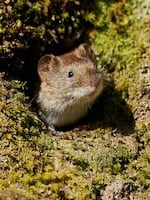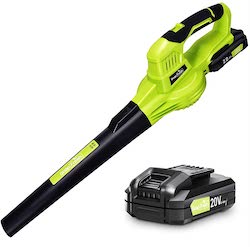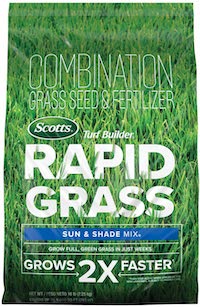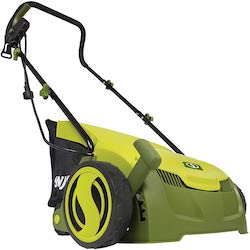Ways to Keep Your Grass from Dying In the Winter
Ever notice how your yard can sometimes turn brown or even die during the colder months? After the cold winter months, you’re spending your time wondering why parts of your lawn remain brown or remain bare while the rest returns to a healthy green.
So, how can you keep your grass from dying in the winter? There are several tips you can follow to keep the grass from dying in the winter. By mowing it before a cold snap, watering it, not disturbing it, fertilizing it, and keeping it clean, you can prevent your grass from dying in the winter months.
It’s not surprising that your yard can suffer at the hands of unforgiving winter weather. It can even affect well cared for lawns and stunt its growth. This article serves as a guide with essential tips to keep your grass from dying during the winter!
Tips for Keeping Your Grass from Dying In the Winter
Mow Your Lawn In the Winter To Prevent It From Dying
Typically, you don’t need to mow your lawn during the winter. However, if the weather is calling for subfreezing temperatures, you should go ahead and mow one last time. Make sure to set your mower blade to the height of three inches. This helps to remove weeds and other unwanted plants.
Taller grass forms the perfect environment for field mice and other burrowing animals. Ensure that your lawn is short before winter to reduce the number of rodents or animals burrowing through your turf.
Water Your Lawn In the Winter to Keep It From Dying

Winter can be dry with little to no rain. If your lawn doesn’t receive any rain, you should water it. Setting up a sprinkler to help keep your yard hydrated during dry spells may be in your home’s best interest.
Keep in mind that it is best to water your lawn if it has been a week or longer since it last rained. It’s also important to note that watering during the cold months could lead to the grass freezing and unintentionally killing it, so make sure you don’t water your yard when the weather is about to go below freezing.
Avoid Walking On Your Lawn In the Winter to Keep It From Dying
Grass can become stressed during winter due to the weather. You should take care to not walk across your lawn, which would cause it damage. Form habits using sidewalks or driveways to walk rather than walking directly through your yard.
Fertilize Your Lawn In the Winter to Keep It From Dying
Fertilizing your lawn can help to reduce the risk of the turf dying during the winter. You’ll want to make sure that you use the proper fertilizer meant for the appropriate season. You can fertilize during the winter months as long as you use the appropriate fertilizer. Although, it is best to fertilize towards the weeks of late fall or early winter for cool-season grasses.
Fertilizing, in general, is nutritious for your lawn and contains elements it needs to survive. Plants and soil need a lot of nitrogen to survive the cold months. Nitrogen-rich soil will help nourish everything while the blanket of snow insulates it. When you fertilize, ensure that you place it near the base of the plants to penetrate the roots.
On top of fertilizing your lawn, you may consider overseeding. If you are already experiencing bare patches in your yard, fertilizer won’t help those areas. It’s recommended that you seed those empty areas and even overseed to ensure the problem is dealt with properly. Leaving dead spots under the snow hinders them from having the ability to grow grass after winter.
Keep Your Lawn Clean In the Winter to Keep It From Dying
Keeping your lawn clean during the winter by raking or blowing debris can help keep it healthy. When leaves, pine needles, or other debris gather overtime on your lawn’s surface, it can prevent grass from getting proper sunlight and moisture. Raking can also aid in stirring up the surface soil to open pores to the root systems. It can also help prepare your lawn before seeding.
By following these tips, you can help maintain your lawn and prevent it from dying or browning in the winter.
Reasons Grass Dies In the Winter
Many conditions can result in dead or brown patches of grass in your lawn. Those patches can take months to fill in on their own and could even require you to reseed or resod your yard.
Cold Desiccation
Grass can survive almost any temperature if it is blanketed with enough snow. Snow helps by acting as an insulator. However, if any grass isn’t covered in extremely cold conditions, it will continue to lose moisture and oxygen even after the ground is frozen. The frozen roots can’t replace the moisture, resulting in the grass suffering cell death or death to the plant crowns.
To treat cold desiccation, you first should wait to see if the grass returns to health. If the damage seems minor, the individual grass plants may recover. Surrounding grass plants may also fill in the bare areas. If you have more significant damage, you will likely have to reseed or resod dead regions.
Snow Mold
When there is heavy snowfall on ground that isn’t yet cold, the moist conditions may foster a variety of fungal diseases. This is also known as snow mold. When the snow melts and the season turns to spring, you may notice fuzzy or crusty patches of grass. These patches are sometimes pink or gray. It usually dies when the sun or breeze dries out the lawn, but if the lawn has been infected for an extended period, the grass may die. However, grass will usually gradually recover.
Make sure to rake up any leftover debris from the previous year to improve air circulation to the grass. To prevent snow mold, make sure to dethatch or air out your lawn regularly. It is also advised to refrain from late-season fertilizing of your yard because the nutrients that aren’t absorbed while the ground is still warm may foster mold.
Crown Freeze
Crown freeze occurs when moist weather is followed by a sudden freeze, which kills the crowns of turfgrass. This happens more usually in late winter and early spring when an unexpected frost occurs in warm climates planted with warm-season grass. Crown freeze can also happen when the crowns of grass have absorbed a large amount of water suddenly expands when it freezes.
If there is a lot of damage, it will require reseeding or resodding. Unfortunately, you can’t prevent the crowns from freezing. If you suffer from frequent crown freeze, consider reseeding with cool-season grass.
Voles
 Voles, small rodents that leave a narrow band of dead grass in your yard, can also cause areas of your lawn to die. If you have a trail of dead grass, it may be caused by voles that have eaten away at the grassroots.
Voles, small rodents that leave a narrow band of dead grass in your yard, can also cause areas of your lawn to die. If you have a trail of dead grass, it may be caused by voles that have eaten away at the grassroots.
These bare trails are usually filled in by the surrounding grass areas. To prevent voles, make sure you remove dead grass and fallen leaves in the fall. Dead grass and leaves can offer voles shelter in the winter. You can also trap and bait them the same way you do mice.
The Best Time to Seed
If you find that you need to seed your lawn, it’s best to plant pre-winter. This means seeding around August to mid-September. Before seeding, you’ll want to prepare your lawn. Seeding or fertilizing when the ground is compact or when it’s covered in leaves can be pointless. So, you’ll want to rake and mow beforehand. After seeding, ensure that you keep those areas well-watered until the frost or snow sets in for the season.
Before you seed your lawn, you may also want to prepare your yard for seeding by weeding it. Weeding during the fall can have just as many benefits as weeding during other seasons. By ridding your yard of plants that can potentially kill your grass and steal necessary nutrients, you give your grass a better chance at thriving post-winter. This can also help you air out your lawn.
Aerate or Air Out Your Lawn
You may notice that the soil in your yard has become hard and more brittle in the summer. This can cause issues in the winter months because it won’t allow for your soil to breathe. Imagine that your yard has turned solid, and snow falls on top of it. What happens to the grass or plant roots? They need air and can’t thrive in this type of environment.
The solution is to aerate your lawn. Aeration, when you pull the small plug of soil from the turf to create pores, helps to open up the surface to allow the roots to breathe and absorb nutrients.
![]() All of these tips can help you maintain your lawn before, during, and after those cold winter months! For more tips and lawn-care tricks, read more of American Lawns articles! In addition to protecting your lawn, it’s important to protect your home altogether by ensuring you have sufficient insurance coverage. There’s no point having a stunning lawn if your home isn’t well maintained.
All of these tips can help you maintain your lawn before, during, and after those cold winter months! For more tips and lawn-care tricks, read more of American Lawns articles! In addition to protecting your lawn, it’s important to protect your home altogether by ensuring you have sufficient insurance coverage. There’s no point having a stunning lawn if your home isn’t well maintained.





